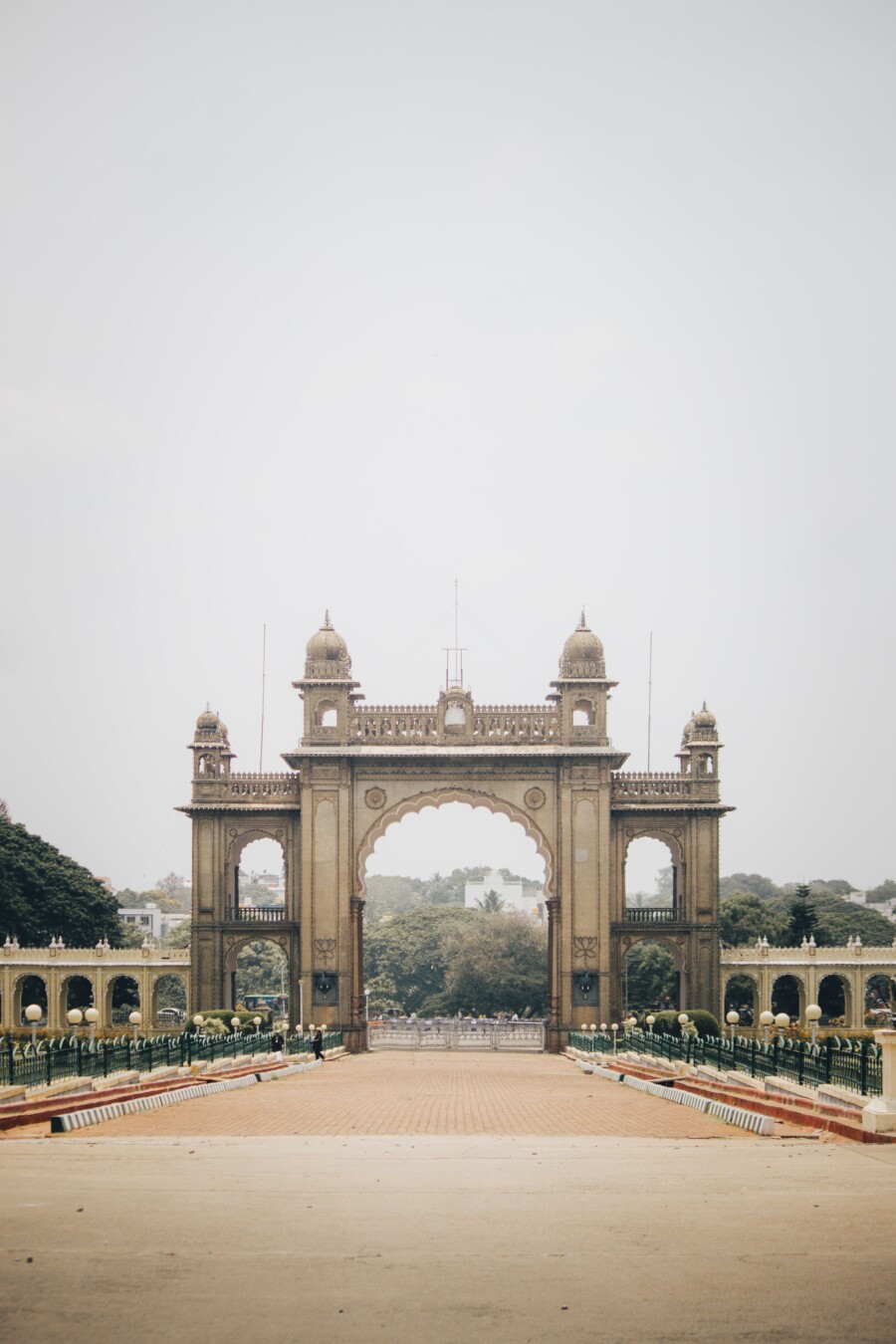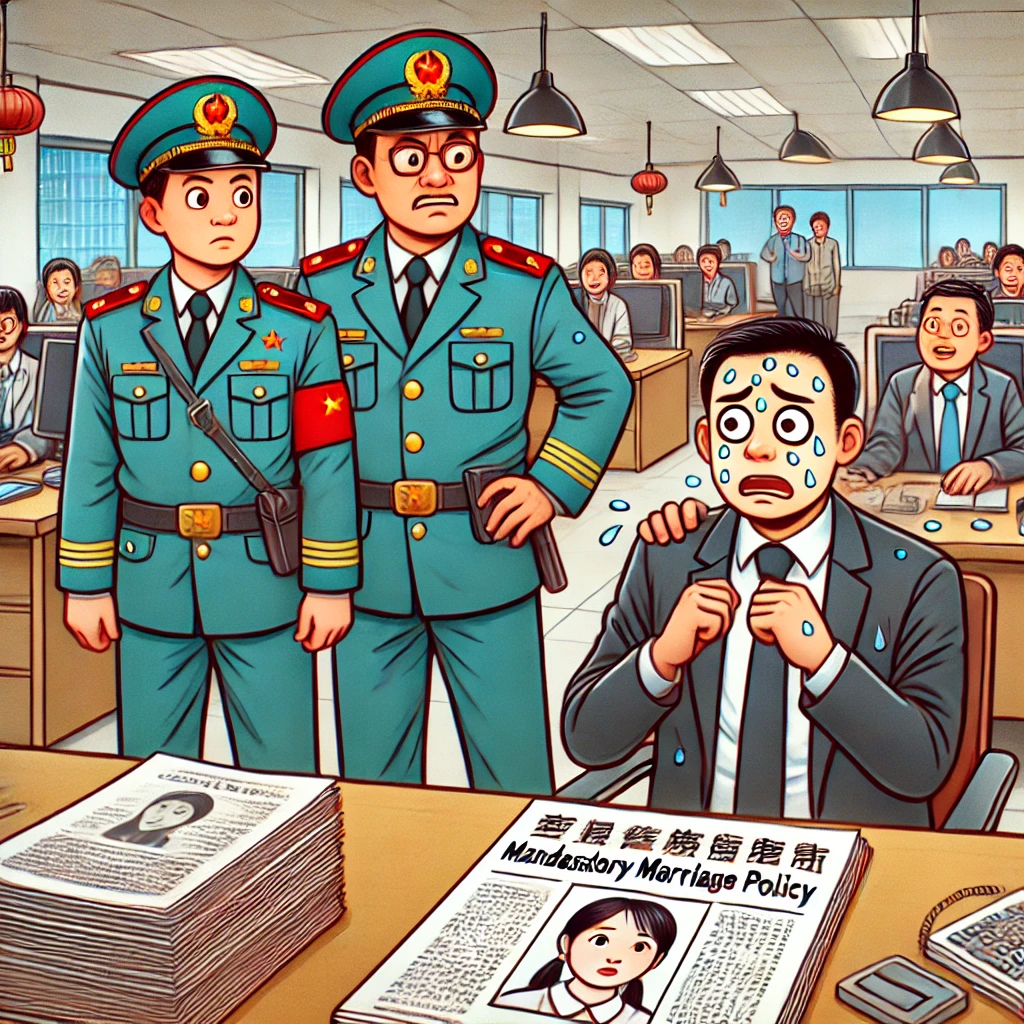The city of Bengaluru, also known as India’s Silicon Valley, recently made headlines when protesters tore down English billboards and demanded that they be written in the local language, Kannada. The protest was led by a group called Karnataka Rakshana Vedike (KRV), who wanted the government to make a law saying that 60% of each display sign in the city should be in Kannada. Some political parties supported the demand, but they didn’t like the violence. This incident shows how people in India care about their language, with over 300 languages spoken in the country.
The KRV has been saying for a long time that Kannada and its speakers are being ignored in Bengaluru, a city where people from all over the country and the world live and work. Some locals worry that they will become a minority because of all the people moving to the city. The demand for “Kannada first” comes from a feeling of pride in the language. In the 1920s, Kannada speakers first asked for their own state, and at first, they were okay with other languages, like English.
But in the 1980s, the protests got more intense, and Kannada nationalists started targeting other Indian languages like Sanskrit, Tamil, Urdu, and Hindi. They wanted Kannada to be the only first language in schools, protested against Tamil Nadu over sharing water, and didn’t like Urdu being used on the state broadcaster. In 2017, they even went after Hindi, asking for it to be taken off signs and announcements on the Bengaluru Metro.
The demand for Kannada signs got bigger when the IT industry grew in the 1990s. Kannada speakers were worried that people from other states who spoke English were taking their jobs. The KRV started asking for special treatment for local people to protect job opportunities. They say that regional independence is important in India, and English signs get in the way of that. But they also say they don’t mind multinational companies where English is needed for work.
Some Kannada speakers support the KRV’s demands, but the Federation of Karnataka Chamber of Commerce and Industry (FKCCI) says that the recent protests and changes to signs won’t affect Bengaluru’s reputation as a global city. The hardworking people of Bengaluru, who made the city famous, will keep doing good work no matter what language the signs are in. The FKCCI has asked businesses to follow the law and use Kannada on their signs. They have until February 28 to make the changes.
In conclusion, the recent protests in Bengaluru for Kannada signs show how people in India care about their language. Kannada nationalists have been asking for Kannada language and culture to be promoted for a long time, and their demands have gotten stronger over time. While the protests have caused a lot of discussion, they probably won’t change Bengaluru’s reputation as a global city.
Original news source: Bengaluru: Why English is dividing people in India’s Silicon Valley (BBC)
🎧 Listen:
Slow
Normal
Fast
📖 Vocabulary:
| 1 | headlines | The main stories in the news |
| 2 | protesters | People who show they disagree with something, often in public |
| 3 | demanded | Asked for something forcefully |
| 4 | violence | Physical force intended to hurt or damage |
| 5 | minority | A smaller number or part |
| 6 | pride | A feeling of deep pleasure or satisfaction from one’s own achievements |
| 7 | nationalists | People who strongly support their nation and its interests, sometimes aggressively |
| 8 | targeted | Chosen as an object of attention or attack |
| 9 | regional | Related to a specific area or part of a country |
| 10 | multinational | A company that operates in several countries |
| 11 | reputation | The way people think about someone or something |
| 12 | hardworking | People who are very diligent and put a lot of effort into their work |
| 13 | promoted | Helped something to be used, seen, or known by more people |
| 14 | conclusion | The final part of something, usually summarizing the main points |
| 15 | discussion | A conversation or debate about a specific topic |
Group or Classroom Activities
Warm-up Activities:
– News Summary
Instructions: Divide the class into pairs or small groups. Give each group a copy of the article. Instruct them to read the article and then summarize the main points in their own words. After a designated amount of time, have each group share their summaries with the class.
– Opinion Poll
Instructions: Divide the class into pairs or small groups. Instruct each group to come up with a list of questions related to the article. The questions should be designed to gather opinions from their classmates. Once the questions are prepared, have the groups go around the class and ask their classmates the questions. After collecting the responses, each group can present their findings to the class.
– Headline Creation
Instructions: Divide the class into pairs or small groups. Instruct each group to create a catchy headline for the article. Encourage them to be creative and think about the main points of the article. Once the headlines are created, have each group share their headline with the class and explain why they chose it.
– Vocabulary Pictionary
Instructions: Choose a selection of vocabulary words from the article. Write each word on separate pieces of paper and put them in a hat or container. Divide the class into teams. One student from each team will come up and pick a word from the hat. They must then draw a picture to represent the word while their teammates try to guess it. The team with the most correct guesses wins.
– Pros and Cons
Instructions: Divide the class into two groups. Assign one group to represent the perspective of the KRV and the other group to represent the perspective of the FKCCI. Instruct each group to brainstorm a list of pros and cons related to the demands for Kannada signs. After the brainstorming, have each group present their arguments to the class and engage in a debate-style discussion.
🤔 Comprehension Questions:
1. What was the recent protest in Bengaluru about?
2. Who led the protest and what did they want the government to do?
3. Why do some locals worry about becoming a minority in Bengaluru?
4. Why do Kannada speakers feel a sense of pride in their language?
5. How did the demands of Kannada nationalists change in the 1980s?
6. Why did the demand for Kannada signs increase in the 1990s?
7. What is the Federation of Karnataka Chamber of Commerce and Industry’s opinion on the recent protests?
8. Will the recent protests likely change Bengaluru’s reputation as a global city?
Go to answers ⇩
🎧✍️ Listen and Fill in the Gaps:
The city of Bengaluru, also (1)______ as (2)______’s (3)______ Valley, recently made headlines when protesters tore down English billboards and demanded that they be written in the local language, Kannada. The protest was led by a group called Karnataka Rakshana Vedike (KRV), who wanted the government to make a law saying that 60% of each display sign in the city should be in Kannada. Some political parties supported the demand, but they didn’t like the violence. This incident shows how people in India care about their language, with over 300 (4)______ spoken in the country.
The KRV has been saying for a long time that Kannada and its speakers are being ignored in Bengaluru, a city where people from all over the country and the world live and work. Some locals worry that they will become a minority because of all the people moving to the city. The demand for “Kannada first” comes from a feeling of pride in the language. In the 1920s, Kannada speakers first asked for their own state, and at first, they were okay with (5)______ languages, like English.
But in the (6)______, the protests got more intense, and Kannada (7)______ started targeting other Indian languages like Sanskrit, Tamil, Urdu, and (8)______. They wanted Kannada to be the only first language in schools, protested against Tamil Nadu over sharing water, and didn’t like Urdu being used on the state broadcaster. In 2017, they even went after Hindi, asking for it to be taken off (9)______ and announcements on the Bengaluru Metro.
The demand for Kannada signs got bigger when the IT industry grew in the 1990s. Kannada speakers were worried that people from other states who spoke English were taking their jobs. The KRV started asking for (10)______ treatment for local people to (11)______ job opportunities. They say that regional independence is important in India, and English signs get in the way of that. But they also say they don’t mind (12)______ companies where English is needed for work.
Some Kannada speakers support the KRV’s demands, but the Federation of Karnataka Chamber of Commerce and Industry (FKCCI) says that the recent protests and changes to signs won’t affect Bengaluru’s reputation as a global city. The hardworking people of Bengaluru, who made the city famous, will keep doing good work no matter what language the signs are in. The FKCCI has asked businesses to follow the law and use Kannada on their signs. They have until (13)______ 28 to make the changes.
In conclusion, the recent protests in Bengaluru for Kannada signs show how people in India care about their language. Kannada nationalists have been asking for Kannada language and culture to be promoted for a long time, and their demands have gotten (14)______ over time. While the protests have (15)______ a lot of (16)______, they probably won’t change Bengaluru’s reputation as a global city.
Go to answers ⇩
💬 Discussion Questions:
Students can ask a partner these questions, or discuss them as a group.
1. What is the city of Bengaluru known for?
2. How would you feel if billboards in your city were torn down and replaced with signs in a different language?
3. Do you think it’s important for cities to prioritize their local language? Why or why not?
4. What is the Karnataka Rakshana Vedike (KRV) protesting for?
5. How do you think the people who speak Kannada in Bengaluru feel about becoming a minority?
6. Why do you think Kannada nationalists started targeting other Indian languages?
7. Do you think it’s fair for Kannada speakers to ask for special treatment to protect job opportunities? Why or why not?
8. How do you think multinational companies in Bengaluru feel about the demand for Kannada signs?
9. What does the Federation of Karnataka Chamber of Commerce and Industry (FKCCI) say about the changes to signs in Bengaluru?
10. How do you think the recent protests will affect Bengaluru’s reputation as a global city?
11. Do you think it’s important for cities to preserve their local language and culture? Why or why not?
12. How do you feel about the demands of Kannada nationalists?
13. What do you think will happen if English signs are removed from the Bengaluru Metro?
14. How do you think the recent protests have impacted the discussion about language in India?
15. Do you think the recent protests will lead to any changes in Bengaluru’s language policies? Why or why not?
Individual Activities
📖💭 Vocabulary Meanings:
Match each word to its meaning.
Words:
1. headlines
2. protesters
3. demanded
4. violence
5. minority
6. pride
7. nationalists
8. targeted
9. regional
10. multinational
11. reputation
12. hardworking
13. promoted
14. conclusion
15. discussion
Meanings:
(A) Chosen as an object of attention or attack
(B) People who strongly support their nation and its interests, sometimes aggressively
(C) Asked for something forcefully
(D) Helped something to be used, seen, or known by more people
(E) A conversation or debate about a specific topic
(F) A smaller number or part
(G) Related to a specific area or part of a country
(H) Physical force intended to hurt or damage
(I) A feeling of deep pleasure or satisfaction from one’s own achievements
(J) The way people think about someone or something
(K) The main stories in the news
(L) People who show they disagree with something, often in public
(M) A company that operates in several countries
(N) The final part of something, usually summarizing the main points
(O) People who are very diligent and put a lot of effort into their work
Go to answers ⇩
🔡 Multiple Choice Questions:
1. What is the nickname for the city of Bengaluru?
(a) The Language Hub
(b) India’s Silicon Valley
(c) The Cultural Capital
(d) The IT Industry Hub
2. Who led the recent protest in Bengaluru for Kannada signs?
(a) Karnataka Rakshana Vedike (KRV)
(b) Federation of Karnataka Chamber of Commerce and Industry (FKCCI)
(c) Kannada nationalists
(d) Political parties
3. How many languages are spoken in India?
(a) Over 100
(b) Over 500
(c) Over 200
(d) Over 300
4. What is the main reason behind the demand for “Kannada first” in Bengaluru?
(a) Fear of becoming a minority
(b) Protection of job opportunities
(c) Pride in the language
(d) Promotion of regional independence
5. Which languages have Kannada nationalists targeted in their protests?
(a) English, Sanskrit, Tamil, and Urdu
(b) Sanskrit, Tamil, Urdu, and Hindi
(c) Tamil, Urdu, Hindi, and English
(d) Hindi, English, Sanskrit, and Tamil
6. Why did the demand for Kannada signs increase in the 1990s?
(a) Growth of the IT industry
(b) Increase in the number of multinational companies
(c) Fear of losing job opportunities to English speakers
(d) Rise in the number of people moving to Bengaluru
7. Who supports the KRV’s demands for Kannada signs?
(a) FKCCI
(b) Political parties
(c) Some Kannada speakers
(d) Multinational companies
8. What is the deadline given to businesses to make changes to their signs?
(a) March 1
(b) January 31
(c) March 15
(d) February 28
Go to answers ⇩
🕵️ True or False Questions:
1. The demand for “Kannada first” stems from a sense of pride in the language, which dates back to the 1920s when Kannada speakers first requested their own state.
2. The protests have decreased over time, with Kannada nationalists not targeting other Indian languages and not expressing concerns about job opportunities for Kannada speakers in the growing IT industry.
3. Some political parties supported the demand for Kannada signs, and agreed with the use of violence during the protest.
4. The incident highlights the importance of language in India, where over 300 languages are spoken.
5. The protest was led by a group called Karnataka Rakshana Vedike (KRV), who wanted a law stating that 60% of each display sign in the city should not be in Kannada.
6. Some locals are not concerned about becoming a minority due to the influx of people moving to the city.
7. Protesters in Bengaluru recently tore down English billboards and demanded that signs be written in the local language, Kannada.
8. The KRV has been advocating for the recognition of Kannada speakers in Bengaluru, as the city attracts people from all over the country and the world.
Go to answers ⇩
📝 Write a Summary:
Write a summary of this news article in two sentences.
Check your writing now with the best free AI for English writing!
Writing Questions:
Answer the following questions. Write as much as you can for each answer.
Check your answers with our free English writing assistant!
1. Why did protesters in Bengaluru tear down English billboards?
2. What is the Karnataka Rakshana Vedike (KRV) demanding from the government?
3. Why are some locals in Bengaluru worried about becoming a minority?
4. What languages have Kannada nationalists targeted in their protests?
5. Why did the demand for Kannada signs increase in the 1990s?
✅ Answers
🤔✅ Comprehension Question Answers:
1. What was the recent protest in Bengaluru about?
The recent protest in Bengaluru was about demanding that billboards and signs in the city be written in the local language, Kannada.
2. Who led the protest and what did they want the government to do?
The protest was led by a group called Karnataka Rakshana Vedike (KRV). They wanted the government to pass a law stating that 60% of each display sign in the city should be in Kannada.
3. Why do some locals worry about becoming a minority in Bengaluru?
Some locals worry about becoming a minority in Bengaluru because many people from other states and countries are moving to the city for work. They are concerned that their own language and culture will be overshadowed by others.
4. Why do Kannada speakers feel a sense of pride in their language?
Kannada speakers feel a sense of pride in their language because it is their mother tongue and an important part of their identity. They believe that promoting Kannada language and culture is essential to preserve their heritage.
5. How did the demands of Kannada nationalists change in the 1980s?
In the 1980s, the demands of Kannada nationalists became more intense. They started targeting other Indian languages like Sanskrit, Tamil, Urdu, and Hindi. They wanted Kannada to be the only first language in schools and protested against the use of other languages in various contexts.
6. Why did the demand for Kannada signs increase in the 1990s?
The demand for Kannada signs increased in the 1990s because of the growth of the IT industry in Bengaluru. Kannada speakers were concerned that people from other states who spoke English were taking away job opportunities. They believed that using Kannada on signs would help protect local job opportunities.
7. What is the Federation of Karnataka Chamber of Commerce and Industry’s opinion on the recent protests?
The Federation of Karnataka Chamber of Commerce and Industry (FKCCI) believes that the recent protests and changes to signs will not affect Bengaluru’s reputation as a global city. They have asked businesses to follow the law and use Kannada on their signs, but they believe that the hardworking people of Bengaluru will continue to excel regardless of the language used on signs.
8. Will the recent protests likely change Bengaluru’s reputation as a global city?
No, the recent protests are unlikely to change Bengaluru’s reputation as a global city. While the protests have sparked discussion and changes to signs, the city’s global reputation is primarily based on the hard work and talent of its people, not the language used on signs.
Go back to questions ⇧
🎧✍️✅ Listen and Fill in the Gaps Answers:
(1) known
(2) India
(3) Silicon
(4) languages
(5) other
(6) 1980s
(7) nationalists
(8) Hindi
(9) signs
(10) special
(11) protect
(12) multinational
(13) February
(14) stronger
(15) caused
(16) discussion
Go back to questions ⇧
📖💭✅ Vocabulary Meanings Answers:
1. headlines
Answer: (K) The main stories in the news
2. protesters
Answer: (L) People who show they disagree with something, often in public
3. demanded
Answer: (C) Asked for something forcefully
4. violence
Answer: (H) Physical force intended to hurt or damage
5. minority
Answer: (F) A smaller number or part
6. pride
Answer: (I) A feeling of deep pleasure or satisfaction from one’s own achievements
7. nationalists
Answer: (B) People who strongly support their nation and its interests, sometimes aggressively
8. targeted
Answer: (A) Chosen as an object of attention or attack
9. regional
Answer: (G) Related to a specific area or part of a country
10. multinational
Answer: (M) A company that operates in several countries
11. reputation
Answer: (J) The way people think about someone or something
12. hardworking
Answer: (O) People who are very diligent and put a lot of effort into their work
13. promoted
Answer: (D) Helped something to be used, seen, or known by more people
14. conclusion
Answer: (N) The final part of something, usually summarizing the main points
15. discussion
Answer: (E) A conversation or debate about a specific topic
Go back to questions ⇧
🔡✅ Multiple Choice Answers:
1. What is the nickname for the city of Bengaluru?
Answer: (b) India’s Silicon Valley
2. Who led the recent protest in Bengaluru for Kannada signs?
Answer: (a) Karnataka Rakshana Vedike (KRV)
3. How many languages are spoken in India?
Answer: (d) Over 300
4. What is the main reason behind the demand for “Kannada first” in Bengaluru?
Answer: (c) Pride in the language
5. Which languages have Kannada nationalists targeted in their protests?
Answer: (b) Sanskrit, Tamil, Urdu, and Hindi
6. Why did the demand for Kannada signs increase in the 1990s?
Answer: (a) Growth of the IT industry
7. Who supports the KRV’s demands for Kannada signs?
Answer: (c) Some Kannada speakers
8. What is the deadline given to businesses to make changes to their signs?
Answer: (d) February 28
Go back to questions ⇧
🕵️✅ True or False Answers:
1. The demand for “Kannada first” stems from a sense of pride in the language, which dates back to the 1920s when Kannada speakers first requested their own state. (Answer: True)
2. The protests have decreased over time, with Kannada nationalists not targeting other Indian languages and not expressing concerns about job opportunities for Kannada speakers in the growing IT industry. (Answer: False)
3. Some political parties supported the demand for Kannada signs, and agreed with the use of violence during the protest. (Answer: False)
4. The incident highlights the importance of language in India, where over 300 languages are spoken. (Answer: True)
5. The protest was led by a group called Karnataka Rakshana Vedike (KRV), who wanted a law stating that 60% of each display sign in the city should not be in Kannada. (Answer: False)
6. Some locals are not concerned about becoming a minority due to the influx of people moving to the city. (Answer: False)
7. Protesters in Bengaluru recently tore down English billboards and demanded that signs be written in the local language, Kannada. (Answer: True)
8. The KRV has been advocating for the recognition of Kannada speakers in Bengaluru, as the city attracts people from all over the country and the world. (Answer: True)
Go back to questions ⇧













